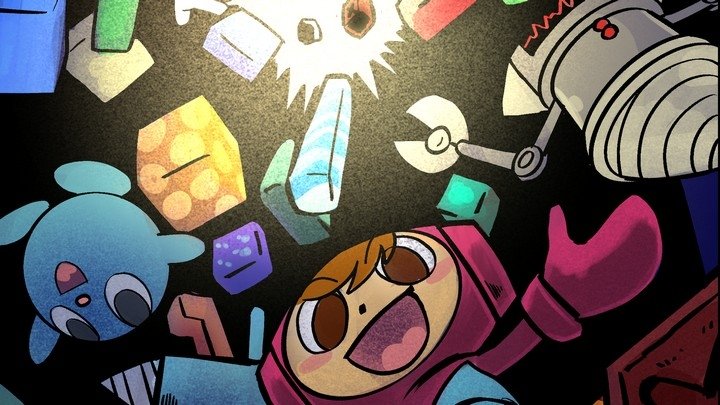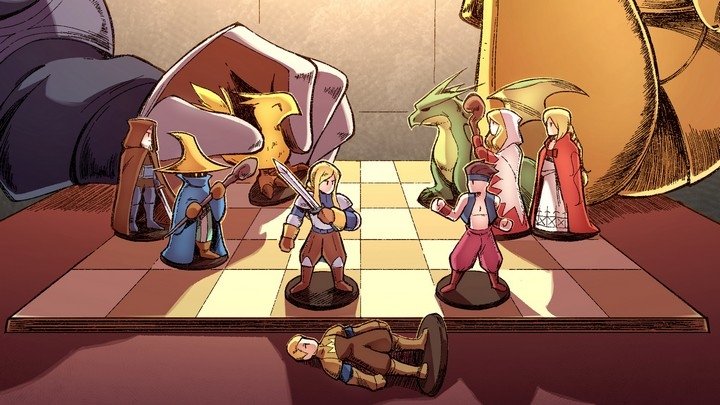Building a retrogaming capture station: The monitor
By popular request, a look at the science behind creating Video Works footage.
I launched the first episode of Game Boy Works — called Game Boy World back then — almost exactly four years ago. I'd contemplated the prospect of creating a Game Boy video series for quite a while, but I finally went forward with the project when I found a handheld Super NES clone system capable of providing a video-out signal. I hooked that thing up to an Elgato HD capture device and proceeded to record some completely terrible footage of Game Boy's launch lineup.
Soon after, a Retronauts fan contacted me and laid it out: This material deserves better video footage. He set me up with a Super NES RGB-21 cable and a Framemeister upscaler, and I picked up a Super NES with RGB-out capabilities, and within a matter of months I had fallen into a rabbit hole of trying to put together the means to record classic game footage from authentic hardware in the best possible quality. It's been an expensive and often frustrating process, because I am neither rich nor technically proficient, and a lot of the leads I've pursued have amounted to costly dead ends. But after nearly four years, my setup is more or less complete, and I've gotten it all properly set up and organized.
With that accomplished, I hope to finally put together a breakdown of this setup. I've received a lot of questions about why, how, and what this setup has involved over the past couple of years. I've also learned (and acquired) quite a bit since our High-Fidelity Classic Gaming podcast a few years ago. I'm not sure precisely how useful these posts will be to other people, and I don't know if they'll have any value as how-to guides, since I'm far from a tech savant. In fact, I'm still learning new and annoying things even today. Old tech is complicated, especially if you want to pursue high-end video output. (I highly recommend RetroRGB for in-depth guides to high-end display concerns!) But I am happy to share my experiences, at least, and hopefully provide a little insight into these processes.
Let's begin with the thing I receive the most questions about: My CRT monitor.

For starters, let me make one thing clear: It is in no way necessary to own a CRT monitor in order to have a satisfying retrogaming experience.
Indeed, there are more and more options for playing classic games on modern televisions with minimal compromises all the time. That's good, because CRTs (cathode ray tubes) are no longer manufactured and are climbing in price as they become scarce and coveted. CRTs have a lot of bad features. They're heavy. Their screens are full of toxic chemicals that make proper disposal different. The beam gun in the back of the cabinet that "paints" light on the screen can pack a fatal jolt of electricity. And if you want high-definition video, you have to look far and wide for a system capable of supporting video modes besides 240p/480i. In most respects, CRTs are greatly inferior to modern LED televisions.
However, CRTs do have one thing going for them: They're the standard for which every console prior to Xbox 360 was designed. Old systems work best on CRTs, with no display lag to worry about. Modern televisions have to process and upscale a standard-definition image to fit their 1080p or 4K resolution, which takes processing time and can result in a few frames of delay between player input and the response being displayed. This creates a perception of sluggishness and makes precise games like fighters, shooters, or (e.g.) Parappa the Rapper almost impossible to enjoy.
I did not originally intend to get into the world of CRTs, but when I realized I wanted to capture high-definition footage of NES light gun and R.O.B. games, I knew it would have to happen. Light guns and R.O.B. don't work with LCD/LED/plasma displays for various reasons — though people are working on solutions — so to record those games off hardware, you need to use a CRT. A kindly listener donated an 8" Sony PVM (professional video monitor), but unfortunately that didn't quite work for me as sets at that size lack input options. So after considerable research, I acquired a Sony PVM 1953MD — a 19" medical monitor designed for stuff like endoscopy and sonogram viewing. It even has a splash guard over the control panel to prevent unsavory or dangerous liquids from getting into the inputs. There are other, better monitors out there, but this one was right for me. Here's why:

This crazy bank of inputs and outputs on the back. In order to play and monitor Zapper games, I wanted a system capable of providing RGB video passthrough. (I've since found a better solution, but this did the trick for the first year of NES Works videos!) This allows me to take an RGB feed from an NES and run it into the television for viewing and play, while the video signal also passes through to an external upscaling and recording device. It's a somewhat complicated process, and as I was planning it all out, I couldn't find any information to indicate that other people had ever made the effort before me or that it would even work. Still, I took the plunge, and the PVM-1953MD made it possible, as I'd hoped. This particular model has two RGB inputs; Input A has passthrough, while Input B does not. Higher-end models have dual passthrough, for getting fancy.
The passthrough process isn't perfect, as some luminosity is lost from the video signal when it's output from the PVM. I had to tweak light/dark balance on the recorded footage in the editing process. Boosting brightness tends to give better results than having an overly bright feed (which destroys subtle details in a video signal), so it wasn't the worst problem I could have had. And it allowed me to do ridiculous things like record actual high-definition footage of R.O.B. games in action, and that means it was worth it.
So that was kind of a cool thing to do, in an "I can't believe I spent this many hundreds of dollars just to do this stupid thing" sense.
One thing you'll notice about the inputs in the image above is that they're not standard RCA jacks. Instead, they're a format called BNC... which are the exact same standard as RCA cables, just with a different connector. Fortunately, you can buy very inexpensive RCA-to-BNC adapters (some of which you can see plugged into some of the ports on the TV here) on eBay for pennies apiece, so don't let the weird connectors intimidate you.

Something worth noting about this model is that, like a lot of PVMs, these weren't meant to sit at the heart of a hi-fi system, so they only have mono audio ports. That's fine for NES, which was monoaural! It is bad for other consoles, though. I definitely will be adding decent speakers and a stereo audio breakout to my setup one of these days. (Happily, my setup no longer relies on PVM passthrough, so I'm able to record in stereo.) Also of note is the Ext. Sync connector — RGB video feeds require some form of sync signal to keep them from rolling and distorting, so you absolutely need to make certain you buy a video cable with a sync lead and plug that bad boy into the Ext. Sync port.
My PVM is the biggest point of concern in my setup. At some point, I know it's going to die. So I need to buy a backup soon… but prices keep going up. It's an ugly business. The good news is that you don't have to own a PVM (or a BVM — broadcast video monitor — which tends to cost twice as much as a PVM!); any good consumer television with decent inputs will do you right. Sony Triniton screens are always a good bet, and to be completely honest, any input standard of S-video quality or higher is going to look damned good for classic games. I remember when I first upgraded from composite video to S-video during the PlayStation era, and the leap in quality blew my mind. Honestly, no upgrade from that point forward (even RGB) is going to represent that big a step up in quality, so my recommendation is to find a reasonably priced Sony or comparable model with S-video or component-in and call it a day.
It's worth it, though. Old games look beautiful on a CRT. Like I said, I didn't intend to make use of a CRT for my setup, but once I saw NES games running on this screen, I realized it needed to be the monitor for my recording system. I can play lag-free on the CRT and record in high-definition on my computer, meaning my own play experience is as satisfying and high-class as the footage I'm recording. An indulgence, sure, but the point of all of this Retronauts stuff is to savor these games, right? Right.




